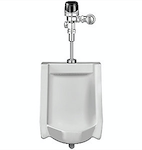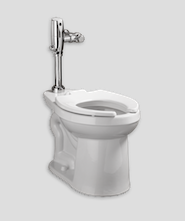For additional information on waste transport in building drainlines visit the PERC and Drainline page on the MaP-Testing website.


Plumbing fixture installations and replacements? Going ‘green’? Try Maximum Performance (MaP) Testing for the information you need!
Learn more about how MaP-Testing can help you.
Since 2003, MaP has been the only reliable independent, free source for the latest information on toilets and urinals…flush performance, efficiencies, features, specifications, and more.


MaP-Testing has a complete list of all 2,700 WaterSense high-efficiency TANK-TYPE toilets (HETs) from 100 different brands and a dedicated ‘search’ tool to locate the toilet models that meets specific needs.
NEW! Over 500 FLUSHOMETER valve/bowl toilet combinations – all MaP tested for performance, including
• WaterSense certified valves and bowls
• 1.28 gallons (4.8L) per flush list
• 1.1 gallons (4.0L) per flush list
High-Efficiency Urinals (HEUs) – Complete lists for download!
• Certified WaterSense flushing urinals
• Certified Non-water (waterless) urinals
Learn about the new MaP-PREMIUM rated tank-type toilets for residential applications:
• WaterSense-certified
• 4.0 Litre – 1.1 gallon per flush or less
• Minimum 600 gram MaP rating on flush performance
Go to our DOWNLOADS PAGE to view and download all product lists.
If you are a Facility Manager responsible for plumbing fixtures, fittings, and systems then you are always looking for ways to improve the reliability of your equipment and systems while reducing O&M requirements. It can be a tricky business. While you are tasked with improving the efficiency of facility operations, you must avoid taking unwarranted risks that end up increasing the operations and maintenance budget.
Please consider the toilets in your facility. Lower flush volumes will definitely reduce facility water use and lower your water bills – but will they also lead to more maintenance (e.g., blocked toilets), user dissatisfaction (e.g., double-flushing), or plugged drain pipes? Where is the balance between better efficiency and higher O&M costs?
See PERC below.

PERC was developed to address these very concerns. PERC conducted detailed research to answer some basic questions about commercial toilets.
For additional information on waste transport in building drainlines visit the PERC and Drainline page on the MaP-Testing website.
Below are some questions and answers that may apply to your facilities.
Answer:
Yes! This volume is not only sufficient to remove waste from the bowl, it is also sufficient to transport the waste through the building’s drain pipes – so there should be no increase in double-flushing or drainline blockages. If toilet flushing makes up a considerable percentage of your building’s total water demand then you may want to avoid using flushometer valves of less than 1.28 gallons, but if your building has significant other sources of drain water then you may be able to achieve even more savings by choosing 1.1 gallon valves while still avoiding issues with drainline blockages.
Answer:
No, as long as you choose a good quality valve you can “mix and match” bowls and valves. The PERC study concluded that the discharge pattern of the valve (i.e., the flush curve) has virtually no impact on how waste is transported through the drain piping and, because it typically takes numerous flushes to fully transport the waste to the building’s main discharge pipe, the volume of “trailing water” produced by the valve also has virtually no impact.
Answer:
Yes, the tensile strength of the toilet paper has a significant impact on waste transport distances with higher strength paper reducing drainline transport distances. If you are experiencing periodic stoppages (clogs) in your drain system, consider changing the toilet paper to a lesser strength.
Answer:
Yes they do. A 2% pipe slope will generally transport waste further than a 1% slope and a 3-inch diameter pipe will generally transport waste further than a 4-inch diameter pipe unless high tensile toilet paper is used and then there is no advantage. However, once building construction is complete, it is generally not possible to change pipe slope or diameter.
Principal, Koeller & Company
Office – 714.777.2744
Mobile – 714.757.0679
Email – jkoeller@map-testing.com
Principal, Gauley Associates, Ltd.
Office – 519.853.8847
Mobile – 416.677.6193
Email – bill@gauley.ca
